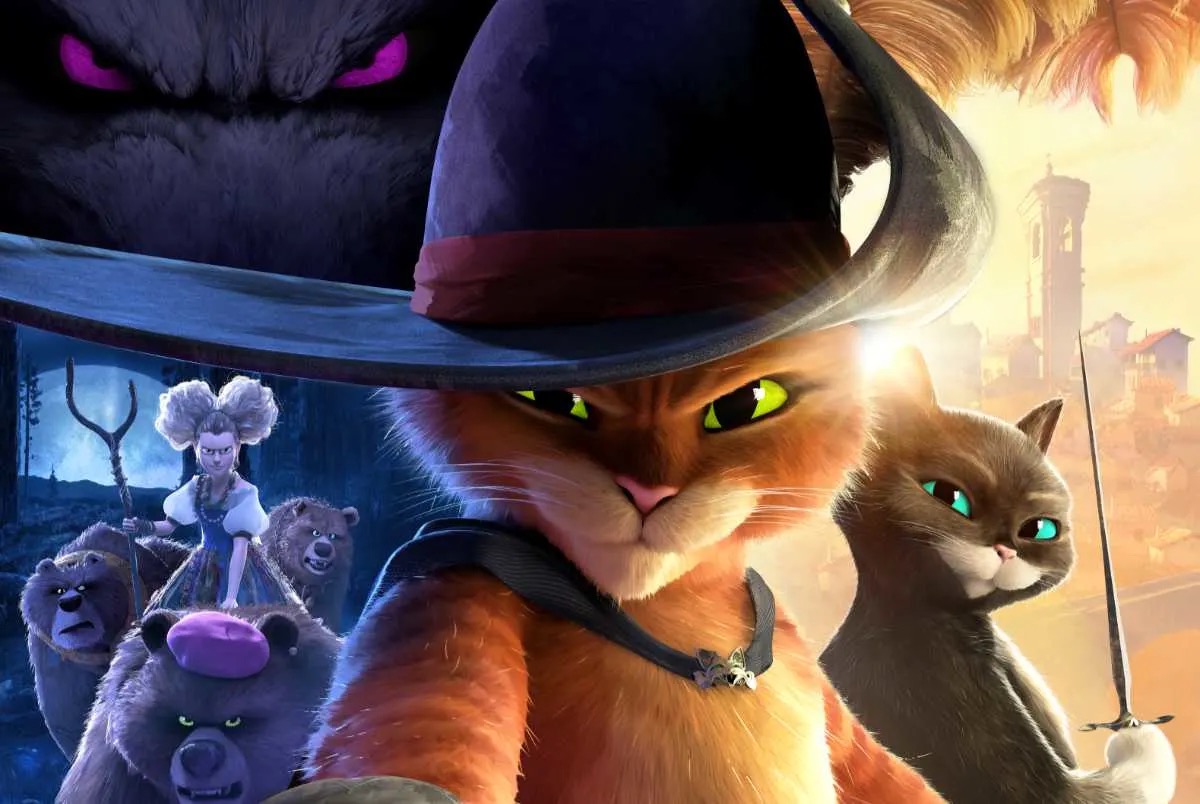
c/o Vital Thrills
The lights dim. The Nicole Kidman AMC ad begins to play. The legendary feline icon graces our screens for the first time in over a decade…and I feel true joy for the first time in my brief existence.
In all seriousness, if you haven’t heard of the buzz around this movie, you must be living under a rock. “Puss in Boots: The Last Wish” is the sequel to the 2011 film “Puss in Boots,” a spin-off of the “Shrek” film franchise. This animated movie has quickly taken the world by storm. Its combination of flashy, “Into the Spider-Verse”–style animation with great writing and voice acting has been lauded by everyone under the sun. The film—released on Dec. 21, 2022—stars Antonio Banderas, Salma Hayek, Harvey Guillén, Florence Pugh, Wagner Moura, John Mulaney, and a host of others.
The story starts simply enough. Puss is celebrating another successful exploit in a local village, and after an incredibly stylized and well-choreographed action scene against a stone giant (which feels like it was directly inspired by “Attack on Titan”), the feline hero is killed. Realizing he’s used up eight of his nine lives, Puss wonders if it really is time for him to give up the adventurer lifestyle. That is, unless he can grab the mystical Wishing Star and regain his lost lives.
And that’s just the tip of the iceberg. The plot may seem like a cookie-cutter kids’ movie, but it goes far deeper than the viewer could predict. Wagner Moura (of “Narcos” fame) voices the genuinely terrifying Wolf who follows Puss and seeks to kill him for a reason yet unknown. Goldilocks (Florence Pugh) and the Three Bears (Olivia Colman, Ray Winstone, and Samson Kayo), a family wanted for their crimes, join the search for the Star; Salma Hayek returns as Kitty Softpaws; and John Mulaney voices the sadistically hilarious Big Jack Horner. All these characters and their respective plotlines converge on each other multiple times throughout the story, always leading to humorous and extremely entertaining interactions and fight scenes.
Whereas most stories with this number of characters feel overstuffed and dragged down by pacing issues, “The Last Wish” does not drop for a second. Every single character, be it the titular Gato con Botas or the myriad of villains populating the story, is given the right amount of screen time and development. Puss and his crew act as the protagonists, Goldi and her family function as sympathetic villains, and Jack Horner as the unapologetically evil monster who finds much humor in the legitimately gruesome deaths of his servants. Meanwhile, the Wolf is an enigmatic force who is best experienced without any spoilers.
The result is a beautiful splash of chaos, color, and surprisingly mature themes. This may be Antonio Banderas’ best vocal performance as the ferocious feline to date; he uses his aging voice to his advantage when growling lines in the classic “Spaniard swordsman” way. The character design itself has also received a significant upgrade, now favoring a more animated and less realistic style. Considering the “Shrek” franchise has stuck to the same realist CGI style for five movies, it’s amazing that DreamWorks was willing to change things up after two decades of precedent.
The mixture of 2D and 3D textures is also a new experiment for DreamWorks, and while it has been tried in the “Kung Fu Panda” movies, it has never been used to this extent. Elements such as fire, impact lines, and the milk that Puss drinks are rendered as different textures from the environment. It’s a very simple change that breathes new life into this franchise, and I cannot wait to see where the studio goes from here.
The best part is that you can bring your younger relatives to see this with you. I took my eight year-old brother to see it, and he found an extraordinary message about panic attacks and how fear of the inevitable can be overcome. I found myself staring slack-jawed at the screen while the rest of the movie continued normally.
It brings me great joy to know that Western animation is going in this direction. It’s another incredible innovation for the medium, and one can only hope the same is done for other studios’ future films.
Nate Wheeler can be reached at nwheeler@wesleyan.edu.